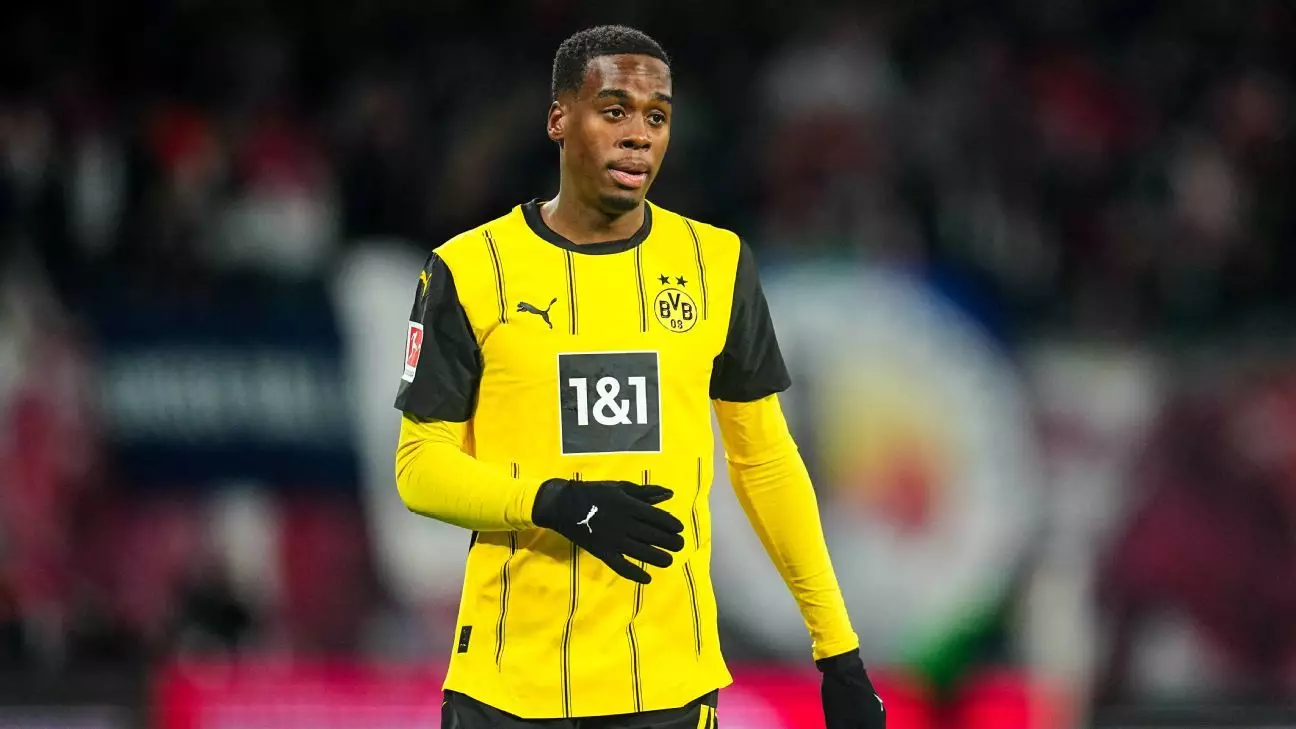As the summer transfer window approaches, Chelsea’s interest in Borussia Dortmund winger Jamie Gittens has become a key talking point among football analysts. The 20-year-old talent showcases a blend of promising potential and current challenges; he has netted ten goals in 27 matches this season, marking him as one of the more exciting prospects in Germany. However, a troubling dip in form—failing to score or assist in his last 16 appearances—casts a shadow on his stock. This inconsistency raises a critical question: Can Chelsea afford to gamble on a player whose performance has fluctuated so drastically?
Chelsea has made considerable investments in young players recently, yet such acquisitions can be a double-edged sword. Gittens requires nurturing and consistent game time to flourish, something that could come with risk for a club under pressure to secure immediate results. As other clubs also show keen interest, Chelsea must tread carefully in their pursuit, balancing the need for raw talent against the risk of investing in the wrong player.
The Victor Osimhen Stakes: Competition Heats Up
Victor Osimhen’s situation looms large over the transfer market, with four prominent clubs—Manchester United, Chelsea, Arsenal, and Juventus—looking to vie for his signature once he returns from his loan at Galatasaray. The Nigerian striker’s strong performances have made it evident why clubs are willing to shell out a substantial sum, albeit reports indicate that Napoli is open to negotiations below his €75 million release clause.
Here lies an insight into the broader implications of this situation: Osimhen has become a highly sought-after commodity precisely because he embodies the modern striker archetype—powerful, skillful, and agile. However, clubs must consider the saturation in the forward market and the implications of investing heavily in a single player while other, perhaps more immediate needs remain unaddressed. Are clubs ready to stake so much of their budget on a single asset, particularly when competition is fierce, and alternatives abound?
Arsenal’s Shift in Strategy: Stocking Up on Youth
In a surprising maneuver, Arsenal appears to be stepping back from their pursuit of Aston Villa striker Ollie Watkins, a player they previously tried to acquire for £40 million. Instead, Mikel Arteta seems to be redirecting his interest towards younger talent such as Benjamin Sesko of RB Leipzig, who at just 21 years old, holds promise for a bright future ahead.
The Gunners’ shift reveals a modern football philosophy that prioritizes sustainability through developing young talent over the immediate impacts of established stars. Pursuing younger prospects might ultimately lead to a more cohesive and adaptable squad. But, the question remains whether they can strike a balance between nurturing budding talent and securing immediate goals.
Internazionale Eyes Young Talent: A Tactical Move?
As the Italian giants Inter Milan express interest in Como’s Nico Paz, it’s clear that the focus on younger players is a widespread trend. Paz, at 20 years old, has shone brightly in Serie A, tallying six goals and five assists in 27 appearances. This pursuit signals Inter’s strategy of infusing their squad with fresh talent, yet they face competition from Real Madrid, who possess a clause allowing them to re-sign him.
The fact that Real Madrid has retained this right speaks volumes about their long-term strategy; top clubs realize that the best talents may indeed be their own. For Inter, obtaining Paz could be a masterstroke or a reminder of the blurring lines in modern-day football where player allegiance swings like a pendulum based on immediate necessity versus long-term value.
Aston Villa’s Ambitious Goal: Shifting Interest to Arda Güler
In an interesting twist, Aston Villa is reportedly considering a move for Arda Güler, the 20-year-old Turkish attacking midfielder from Real Madrid. This suggests that Villa is keen on establishing a competitive edge by acquiring versatile young midfielders, which aligns with current trends where clubs are investing in skillful, dynamic players capable of shifting games.
However, the challenge lies ahead: how will they navigate potential competition, especially from clubs like Liverpool, who though currently rumored to be less keen, have a history of swooping in at the last minute? The fluidity of transfer interests in modern football demands agility and foresight from management. For Villa, acquiring Güler could be foundational, signaling their ambition to not just remain relevant but to carve out a distinct status among a sea of renowned clubs.

